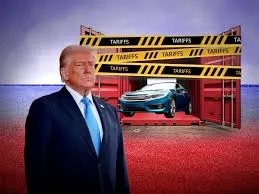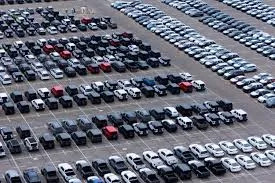Rising auto tariffs ignite global trade tensions, impacting prices, production, and consumer choices across key markets.
As nations struggle to balance protectionism and free trade, auto tariffs have become a flashpoint in international economic negotiations. From the United States to the European Union and China, governments are reevaluating their strategies on vehicle imports, sending ripples through the global automotive industry.
What Are Auto Tariffs?
Auto tariffs are taxes imposed on imported vehicles and auto parts. These charges can range from a few percentage points to over 25%, depending on the country and trade agreements in place. Tariffs are generally used to protect domestic industries from foreign competition, but they often come with broader economic consequences.
In recent years, countries have been using auto tariffs as both economic tools and political leverage. The U.S., for example, has threatened higher tariffs on European cars to gain concessions in unrelated trade areas, such as agriculture or tech regulations.

How Auto Tariffs Affect Consumers
The most immediate effect of auto tariffs is felt by consumers through higher car prices. When import taxes are applied, automakers either absorb the cost—cutting into profits—or pass it on to buyers.
According to industry estimates, a 25% tariff on imported cars could raise average prices in the U.S. by as much as $5,000. These costs ripple out to used car markets, financing, insurance, and maintenance services.
Moreover, auto tariffs limit consumer choice by discouraging the import of foreign brands or specific models. In markets where domestic manufacturing can’t meet demand, shortages and delays become common.
Impact on the Global Supply Chain
The modern automotive industry is deeply integrated. A single vehicle might have parts from over a dozen countries. Auto tariffs disrupt this network, making it more expensive or logistically challenging to move components across borders.
For example, a tariff imposed on Japanese transmissions entering the U.S. can affect American-made vehicles that rely on those parts. This leads to slower production timelines and increased manufacturing costs.
Some manufacturers are responding by shifting production facilities closer to key markets or reconfiguring their supply chains. However, such moves require time, capital, and careful planning.
Political and Economic Repercussions
Auto tariffs have led to diplomatic disputes between major trading partners. The U.S. and the EU have clashed repeatedly over automotive duties, with the World Trade Organization (WTO) occasionally stepping in to mediate.
In China, retaliatory tariffs on U.S.-made vehicles during the 2018-2019 trade war led Tesla to build a gigafactory in Shanghai to avoid fees and speed up delivery to Chinese consumers. Such shifts illustrate how trade policies can reshape industry strategy at a global level.
Developing countries with emerging auto sectors also find themselves caught in the crossfire. For instance, Mexico and South Korea face pressure to renegotiate trade deals to avoid punitive tariffs, even if it means compromising on other economic priorities.

Looking Ahead: What’s Next for Auto Tariffs?
Many analysts believe that auto tariffs will remain a central issue in trade negotiations throughout 2025 and beyond. With upcoming elections in several major economies, including the U.S. and the EU, protectionist rhetoric is likely to intensify.
Still, some nations are pushing for new multilateral agreements to stabilize the automotive market. Efforts to standardize tariff rates or promote cleaner vehicle imports—like electric cars—could be part of the solution.
However, a lasting resolution will require global cooperation and political will, something in short supply amid growing nationalism.
Conclusion
Auto tariffs are no longer just a niche policy tool—they’re at the heart of global trade tensions. While they aim to protect domestic industries, the broader impact on consumers, supply chains, and international relations is profound. As nations navigate these complexities, the road ahead for the auto industry remains uncertain.





